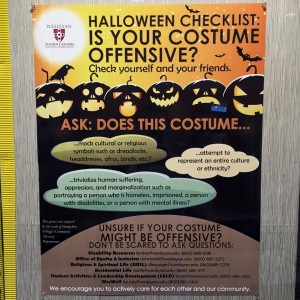Halloween is coming up in a couple of weeks, so student affairs offices around the country are gearing up warnings about offensive Halloween costumes. I really like Wesleyan U’s poster campaign:
My college has a tradition of holding a lunch hour Halloween party. I’m not worried about anyone showing up in inappropriate gear. I’ll go as Darth Vader, and a few others will dress up in Star Wars costumes. I expect Boba Fett to make an appearance, along with at least two stormtroopers. Should be a fun event!

